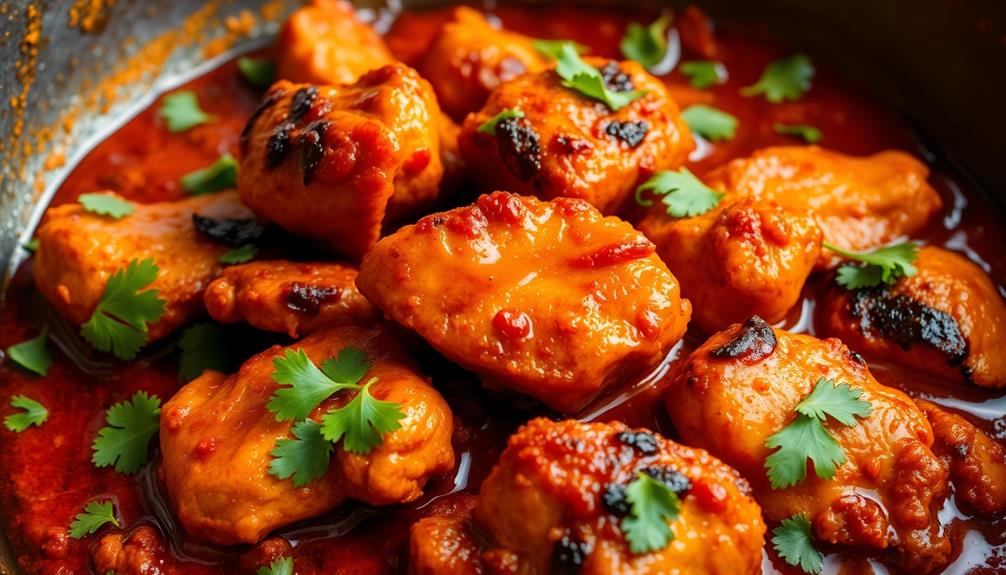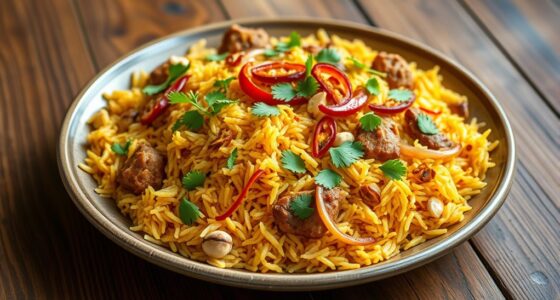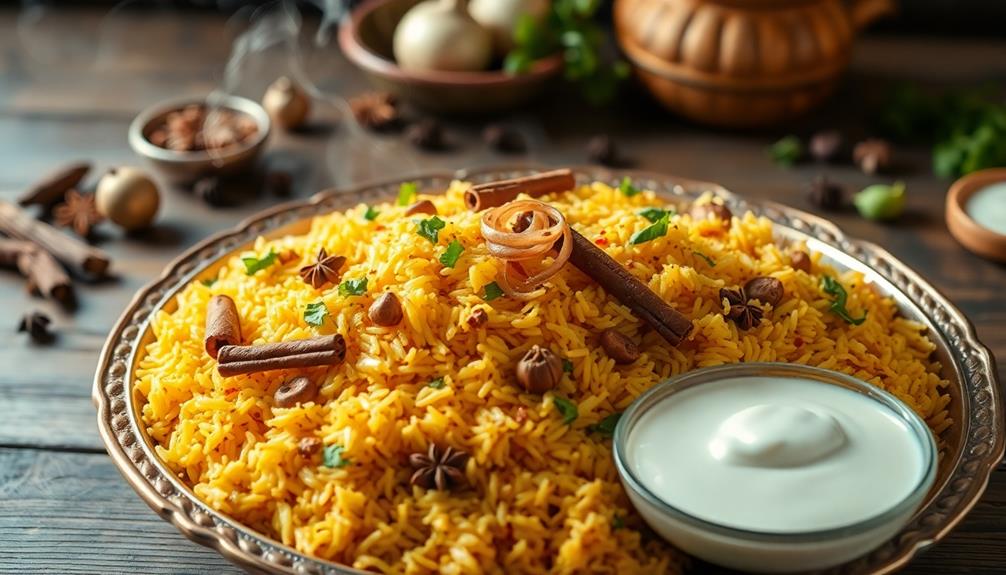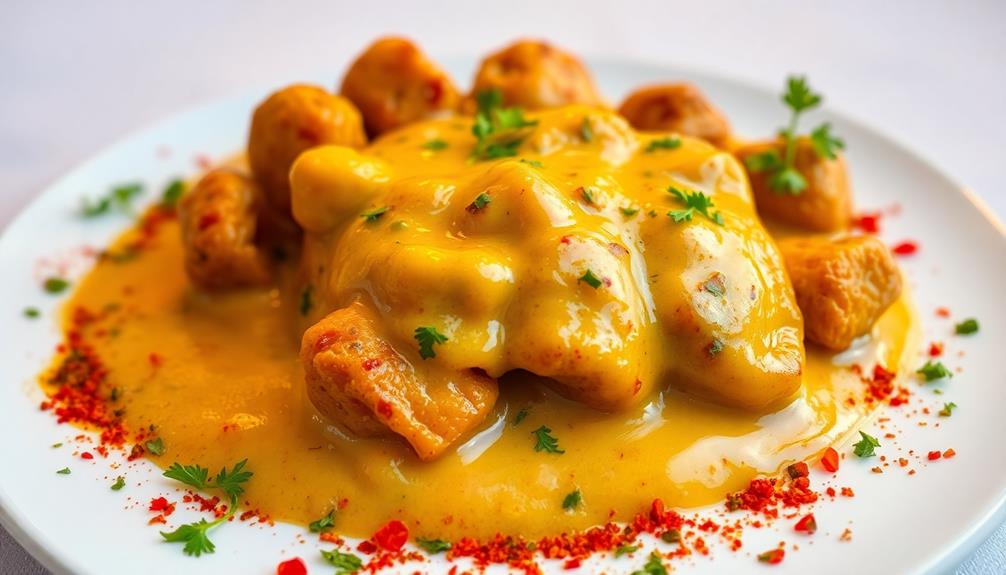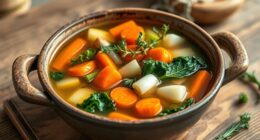Kadai Chicken is a mouthwatering North Indian dish that'll transport you straight to the vibrant markets of India. This beloved recipe showcases bold, smoky flavors thanks to its signature charring over an open flame. The key is perfectly balancing a blend of freshly ground spices like cumin, coriander, and fennel. You'll sauté onions, garlic, and ginger until fragrant, then simmer the chicken in a rich tomato-based sauce. Serve it hot with fluffy naan or basmati rice, garnished with fresh cilantro – a feast for the senses! Want to discover more about this captivating culinary treasure?
Key Takeaways
- Kadai Chicken is a popular North Indian dish characterized by bold, flavorful spices like cumin, coriander, and garam masala.
- The dish is named after the traditional wok-like pan called "kadai" and features a signature smoky note from charring the ingredients.
- The key to Kadai Chicken's flavor lies in the perfect balance of freshly ground spices, which enhance the dish's intensity.
- Typical ingredients include chicken, tomatoes, onions, and a blend of spices, often served with naan, roti, or steamed rice.
- Cooking Kadai Chicken involves sautéing the onions and spices to release their essential oils, resulting in a vibrant, aromatic dish.
History
The origins of Kadai Chicken can be traced back to the northern regions of India, where the dish's distinct flavors and cooking method have been perfected over generations. The name "Kadai" refers to the traditional wok-like pan used to prepare this scrumptious meal.
Sizzling with a blend of aromatic spices, Kadai Chicken is a beloved culinary treasure that has been passed down through families for centuries.
The key to its mouthwatering taste lies in the careful selection and skilful combination of spices, such as cumin, coriander, and chili peppers. As the chicken simmers in the fragrant kadai, the flavors meld together, creating a symphony of tastes that tantalizes the palate.
The dish's signature smoky notes are achieved by gently charring the ingredients over an open flame, a technique that has been mastered by generations of Indian cooks.
Recipe
Kadai Chicken is a popular North Indian dish that's known for its bold and flavorful spices. The dish is named after the kadai, a wok-like pan used to cook the dish. Originating from the state of Uttar Pradesh, Kadai Chicken has become a staple in Indian cuisine, loved for its delicious blend of spices and tender chicken.
The key to a delectable Kadai Chicken lies in the perfectly balanced spices that are roasted and ground together, creating a fragrant and complex flavor profile. The dish is typically enjoyed with naan, roti, or steamed rice, making it a comforting and satisfying meal.
Ingredients:
- 1 lb boneless, skinless chicken thighs, cut into bite-sized pieces
- 2 tablespoons oil
- 1 onion, diced
- 3 cloves garlic, minced
- 1 inch ginger, grated
- 2 tomatoes, diced
- 1 teaspoon cumin seeds
- 1 teaspoon coriander seeds
- 1 teaspoon fennel seeds
- 1 teaspoon red chili powder
- 1 teaspoon garam masala
- 1 teaspoon salt
- 1/4 cup water
- Chopped cilantro for garnish
Instructions:
In a large skillet or wok, heat the oil over medium-high heat. Add the cumin seeds, coriander seeds, and fennel seeds, and toast until fragrant, about 2 minutes.
Add the onion and sauté until translucent, about 5 minutes. Stir in the garlic and ginger, and cook for an additional minute.
Add the tomatoes, red chili powder, garam masala, and salt, and cook for 5-7 minutes, or until the tomatoes have softened and the spices are well combined.
Add the chicken and water, and simmer for 15-20 minutes, or until the chicken is cooked through and the sauce has thickened.
Garnish with chopped cilantro and serve hot with naan, roti, or steamed rice.
For best results, use freshly ground spices for the most intense flavor. You can also adjust the amount of red chili powder to suit your desired level of spiciness. Enjoy your delicious Kadai Chicken!
Cooking Steps
Sauté some onions and ginger until they're nice and fragrant.
Then, add in those ripe tomatoes and your blend of aromatic spices.
Now, it's time to pop in the chicken and let it all simmer together until it's perfectly tender.
Don't forget to stir in a touch of cream or tangy yogurt for an extra creamy finish.
Top it all off with a sprinkle of fresh cilantro, and you've got yourself a delicious Kadai Chicken dish!
Step 1. Sauté Onions and Ginger
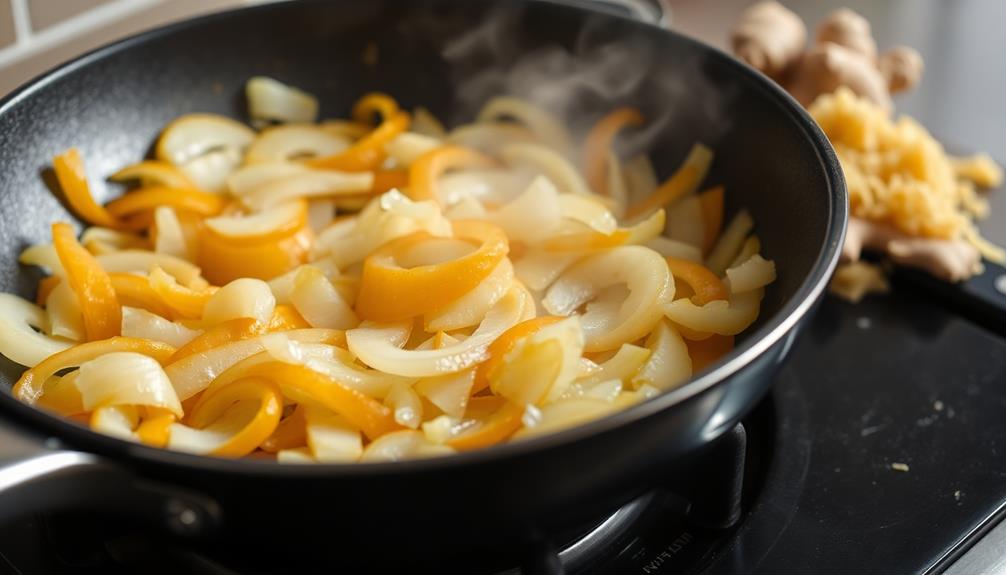
Next, grab a large skillet or wok and heat it over medium-high heat. Once it's nice and hot, add a couple of tablespoons of oil. Toss in the sliced onions and minced ginger. Sauté them together, stirring frequently, until the onions become soft and translucent, about 5 minutes.
The onions and ginger will start to release their aromatic flavors, making your kitchen smell amazing. Keep an eye on them to make sure they don't burn. If they're browning too quickly, reduce the heat a bit. You want the onions to be tender and the ginger to be fragrant.
Once the onions and ginger are perfectly sautéed, you're ready to move on to the next step in creating your delicious Kadai Chicken. This flavorful base will add depth and complexity to the dish. Get ready to take your cooking to the next level!
Step 2. Add Tomatoes and Spices
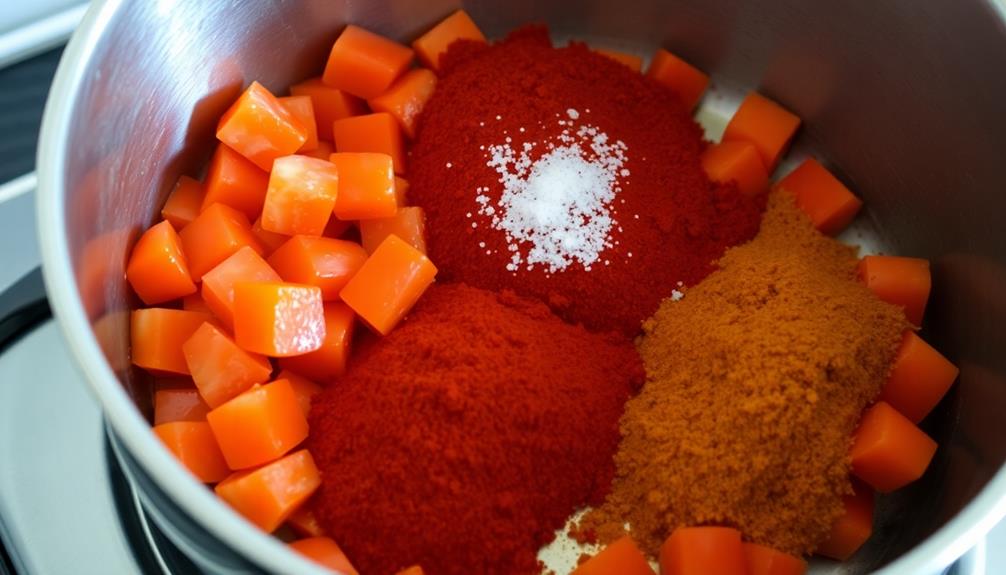
The aromatic sauté of onions and ginger provides the perfect foundation for the next steps.
Now, it's time to add the juicy tomatoes that will bring a burst of flavor to your Kadai Chicken. Grab a few ripe, plump tomatoes and dice them up into bite-sized pieces. Toss the tomato cubes right into the pan, sizzling alongside the onions and ginger. Let the tomatoes cook down for a few minutes, allowing their natural sweetness to meld with the savory aromatics.
Next, it's time to add the spices that will make your Kadai Chicken truly shine. Sprinkle in a generous pinch of fragrant coriander, a dash of earthy cumin, and a touch of fiery chili powder.
Stir everything together, making sure the spices coat the vegetables evenly. The aroma will start to fill your kitchen, and your taste buds will be eagerly anticipating the deliciousness to come. Let the flavors marry for a minute or two, then you're ready to move on to the next step.
Step 3. Add Chicken and Simmer

Add the chicken pieces to the aromatic vegetable mixture. Be sure to nestle the chicken in, letting it soak up all the delicious flavors.
Once the chicken is in, give everything a good stir. Now, it's time to let the chicken simmer. Reduce the heat to medium-low and let the pot bubble away for about 15-20 minutes. This will allow the chicken to cook through and the flavors to meld together.
Keep an eye on it, giving the pot an occasional stir. You'll know the chicken is cooked through when it's no longer pink inside. The sauce should also thicken up nicely during this simmering time.
Once the chicken is cooked, taste the curry and adjust the seasoning if needed. Add a pinch more salt or spice, if desired.
Now, you're ready to serve this aromatic, saucy Kadai Chicken over fluffy basmati rice. Get ready for the mouthwatering aromas to fill your kitchen!
Step 4. Add Cream or Yogurt
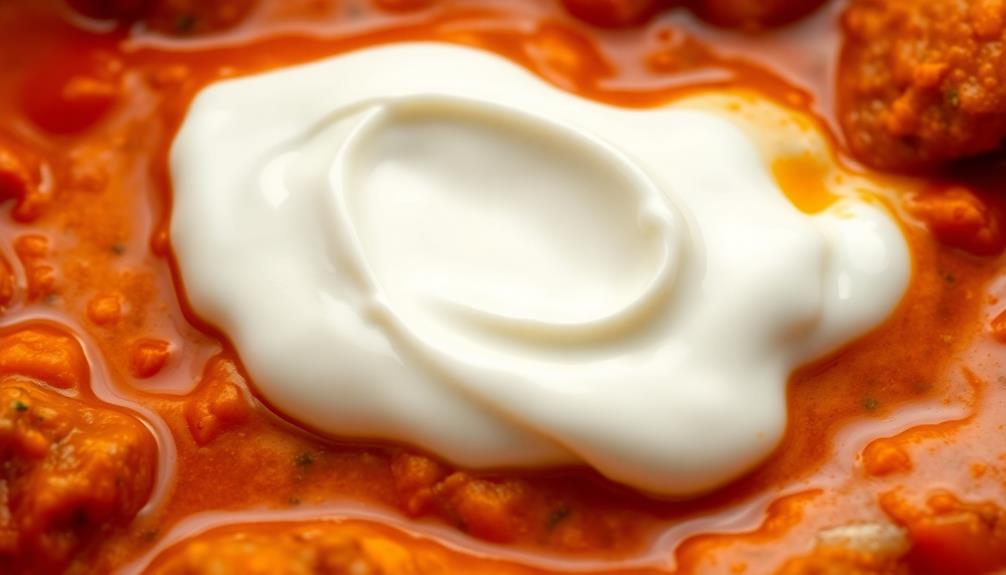
Once the chicken has simmered and cooked through, you'll want to add a touch of richness to the dish. Slowly pour in a cup of heavy cream or thick yogurt, stirring gently to incorporate it into the fragrant sauce. The cream or yogurt will mellow the spices, creating a luxurious, velvety texture that'll have your taste buds dancing.
Be sure to taste the sauce as you go, adjusting the seasoning with a pinch more salt or a squeeze of lemon juice if needed. You want the flavors to be perfectly balanced – not too spicy, not too tangy. The creamy addition should complement the aromatic spices, not overpower them.
Simmer the Kadai Chicken for a few more minutes, allowing the sauce to thicken slightly. This will help the flavors meld together beautifully.
Now, your dish is ready to be served over fluffy basmati rice or with warm naan bread, perfect for soaking up every last drop of that incredible sauce.
Step 5. Garnish With Fresh Cilantro
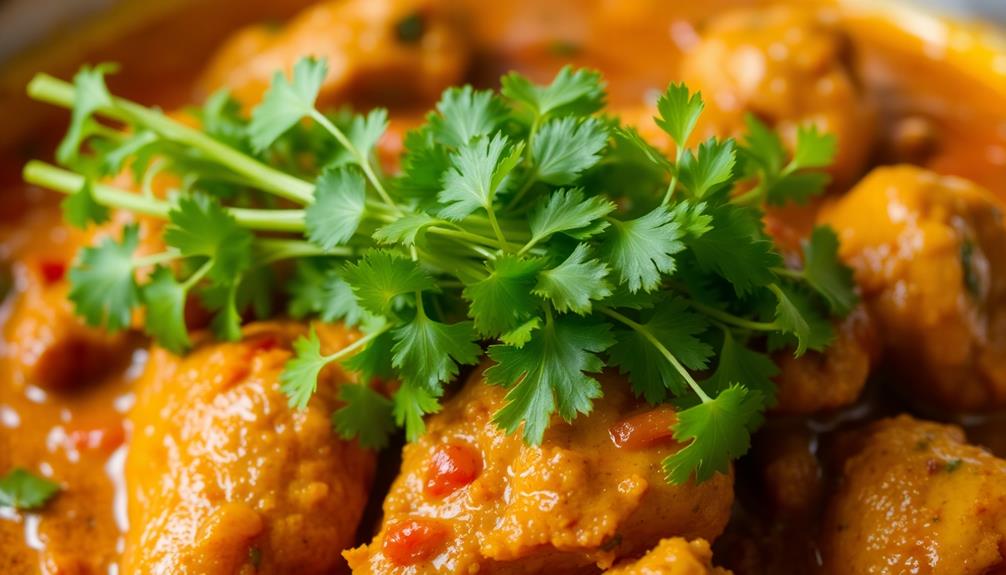
Before serving, garnish the Kadai Chicken with a generous handful of fresh, fragrant cilantro leaves. This vibrant green herb will add a burst of flavor and a pop of color to your dish.
Gently tear the cilantro leaves with your fingers, releasing their aromatic oils. Scatter the cilantro evenly over the top of the sizzling chicken, making sure to cover every bite.
The cool, herbaceous notes of the cilantro will perfectly complement the warm spices and rich creaminess of the Kadai Chicken. The fresh, fragrant cilantro will elevate your dish, making it even more appetizing and visually appealing.
Enjoy the contrast of the tender chicken and the crisp, fresh cilantro as you savor each flavorful mouthful. This simple garnish will take your Kadai Chicken to the next level, making it an irresistible and satisfying meal.
Final Thoughts
As you bring your Kadai Chicken experience to a close, take a moment to reflect on the vibrant flavors and the satisfaction of a well-executed dish. The aromas of ginger, garlic, and spices have filled your kitchen, transporting you to the bustling markets of India. Each bite has been a delightful dance of heat, tanginess, and complexity, leaving your taste buds thoroughly entertained.
With the final garnish of fresh cilantro, your Kadai Chicken is now complete. Savor the final morsels, taking time to appreciate the harmony of textures and the depth of flavor. This dish has been a true culinary adventure, and you can take pride in your skill and dedication in bringing it to life.
As you gather your family or friends to share this meal, bask in the joy of creating something extraordinary. The Kadai Chicken hasn't only nourished your body but also your soul, reminding you of the power of home-cooked meals to bring people together and create lasting memories.
Frequently Asked Questions
How Long Does Kadai Chicken Take to Prepare?
Preparing kadai chicken takes some time, but it's worth the effort!
You'll need to spend around 30-45 minutes getting everything ready. Don't worry, though – the steps are easy to follow, and you'll be rewarded with a delicious, flavorful dish.
Just be sure to have all your ingredients chopped and ready to go before you start cooking. Once you get the hang of it, you'll be whipping up kadai chicken like a pro in no time!
Is Kadai Chicken Suitable for Vegetarians?
I'm sorry, but Kadai Chicken isn't suitable for vegetarians. This dish is made with chicken, so it's not an option if you're looking for a meat-free meal.
However, there are plenty of delicious vegetarian Indian dishes you could try instead! Things like chana masala, dal, or saag paneer would be great choices.
Just let the restaurant know you'd like a vegetarian dish, and they'll be happy to accommodate you. I hope you find something tasty to enjoy!
What Is the Ideal Temperature for Cooking Kadai Chicken?
To cook the perfect kadai chicken, you'll want to aim for a temperature of around 375°F (190°C).
This temperature will ensure your chicken is cooked through and nice and crispy on the outside.
Be sure to keep an eye on it, though – you don't want it to overcook!
With the right temperature, your kadai chicken will turn out absolutely delicious.
Just follow the recipe closely, and you'll have a mouthwatering meal in no time.
Can Kadai Chicken Be Frozen for Later Use?
Absolutely, you can freeze kadai chicken for later use!
Freezing is a great way to save time and enjoy your favorite dish whenever the craving strikes. Simply let the cooked chicken cool completely, then transfer it to an airtight container or freezer bag.
When you're ready to reheat, just thaw it in the fridge overnight and warm it up on the stovetop or in the microwave.
Easy peasy! Enjoy your kadai chicken anytime with this handy freezing tip.
What Are the Common Substitutes for Kadai Chicken Spices?
If you're looking for substitutes for the spices used in kadai chicken, you've got plenty of options! You can try using garam masala, coriander, and cumin as alternatives to the traditional kadai chicken spices. These spices will still give your dish a delicious and aromatic flavor. Additionally, you can also experiment with different combinations of spices to create your own unique twist on the dish. For example, try adding a pinch of cinnamon or cardamom for an unexpected kick of flavor. If you’re interested in trying out these spice substitutions in a new recipe, consider incorporating them into a hearty lentil soup recipe.
You could try using a blend of cumin, coriander, and paprika.
Or, go for garam masala – it's a popular Indian spice mix that'll give your dish a similar flavor.
You could even experiment with curry powder or turmeric.
Just play around and see what works best for your taste buds.
The key is to have fun and get creative in the kitchen!
